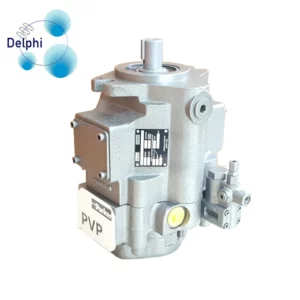Cavitation is a common concern in hydraulic pump operation, including PV Series Pumps manufactured by Linde. Cavitation occurs when the pressure of the hydraulic fluid drops below the vapor pressure, causing vapor bubbles to form and collapse rapidly, resulting in damage to pump components and reduced efficiency.
Linde addresses concerns regarding cavitation in PV Series Pump operation through several methods:
- Optimized Pump Design: Linde designs PV Series Pumps with optimized internal geometries, including suction and discharge ports, to minimize the risk of cavitation. The design ensures smooth fluid flow and minimizes pressure fluctuations, reducing the likelihood of vapor bubble formation.
- Proper Sizing and Selection: Linde assists customers in properly sizing and selecting PV Series Pumps based on the specific application requirements, including flow rate, pressure, and operating conditions. Properly sized pumps operate within their design parameters, reducing the risk of cavitation.
- Pressure Compensated Control: Many PV Series Pumps feature pressure-compensated control mechanisms that adjust the pump output based on system pressure. This helps maintain a consistent pressure level within the hydraulic system, China PV Series Pump manufacturer minimizing the risk of pressure drops and cavitation.
- Integrated Filtration: Linde incorporates filtration systems into PV Series Pumps to remove contaminants and air from the hydraulic fluid, reducing the likelihood of cavitation. Integrated filtration helps maintain fluid cleanliness and prevents the formation of vapor bubbles due to air entrainment.
- Fluid Conditioning: Linde may recommend fluid conditioning techniques, such as deaeration or degassing, to remove dissolved gases and air bubbles from the hydraulic fluid. This helps prevent cavitation by reducing the potential for vapor bubble formation during pump operation.
- Education and Training: Linde provides education and training to customers on the importance of proper pump operation and maintenance practices to minimize the risk of cavitation. This includes guidance on fluid selection, system design, and operating procedures to prevent cavitation-related issues.
- Monitoring and Maintenance: Linde recommends regular monitoring of PV Series Pump performance and maintenance activities to identify and address cavitation-related issues promptly. This may include inspecting pump components, monitoring fluid levels and temperatures, and conducting preventive maintenance tasks to ensure optimal pump operation.
By employing these methods, Linde effectively addresses concerns regarding cavitation in PV Series Pump operation, helping customers maintain reliable and efficient hydraulic systems for their applications.
How do F11 Series Motor handle high-pressure applications?
The F11 Series Motor, manufactured by Linde Hydraulics, is designed to handle high-pressure applications efficiently and reliably. Here are some key features and design aspects that enable the F11 Series Motor to excel in high-pressure environments:
- Axial Piston Design: The F11 Series Motor features an axial piston design, where pistons operate in a radial cylinder block and are arranged around a central drive shaft. This design allows for efficient power transmission and high torque output, making it suitable for high-pressure applications.
- High Pressure Ratings: The F11 Series Motor is engineered to withstand high operating pressures, typically ranging from 280 bar (4,060 psi) to 420 bar (6,090 psi), depending on the specific model and configuration. This high-pressure capability makes the F11 Series Motor suitable for demanding hydraulic systems and applications.
- Robust Construction: The F11 Series Motor is constructed with high-quality materials and precision manufacturing techniques to ensure durability and reliability under high-pressure conditions. Critical components such as pistons, cylinder blocks, and valve plates are designed to withstand high loads and pressures without compromising performance.
- Advanced Sealing Technology: The F11 Series Motor incorporates advanced sealing technology to prevent fluid leakage and maintain system integrity at high pressures. High-quality seals and gaskets are used to ensure tight sealing and minimize internal leakage,China F11 Series Motor manufacturer even under extreme operating conditions.
- Efficient Cooling: The F11 Series Motor is designed with efficient cooling features to dissipate heat generated during operation, especially in high-pressure applications where heat buildup can occur rapidly. Cooling passages and fins are integrated into the motor design to facilitate heat transfer and maintain optimal operating temperatures.
- Precise Control: The F11 Series Motor offers precise control over speed and torque output, even at high pressures, thanks to its advanced hydraulic control system. This allows for smooth and accurate operation in various high-pressure applications, including industrial machinery, construction equipment, and mobile hydraulics.
- Modular Design: The F11 Series Motor features a modular design that allows for easy integration into a wide range of hydraulic systems and applications. Various displacement sizes and mounting options are available to accommodate different requirements, providing flexibility and versatility in high-pressure hydraulic systems.
- Comprehensive Testing and Validation: The F11 Series Motor undergoes comprehensive testing and validation procedures to ensure its performance and reliability in high-pressure applications. Bench testing, endurance testing, and field trials are conducted to verify durability, efficiency, and compliance with industry standards.
Overall, the F11 Series Motor is engineered to meet the challenges of high-pressure hydraulic applications, providing reliable performance, precise control, and durability in demanding operating environments.
